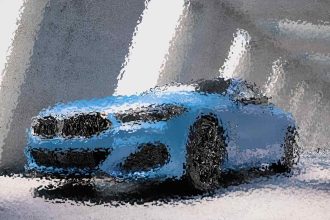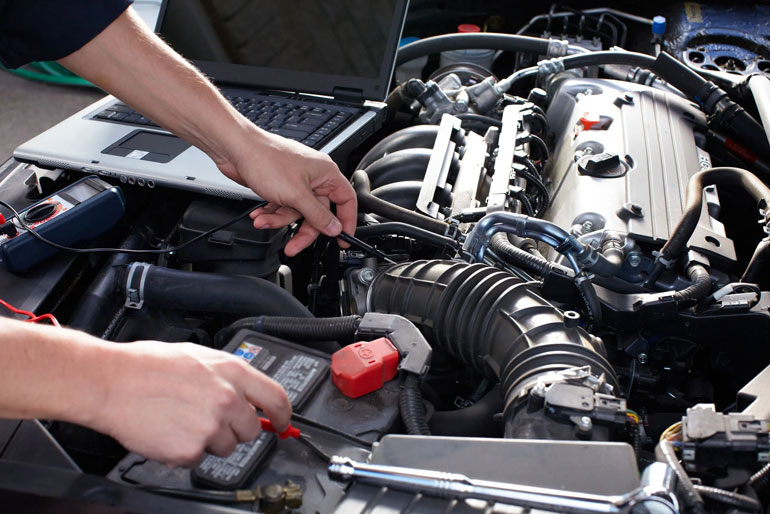Picture the scene: you hop into your car, twist the key, and instead of the familiar vroooom…nothing. Maybe you hear a faint click, or maybe everything stays eerily silent. Often, the culprit is the starter—an electric motor whose only job is to crank the engine fast enough for fuel and spark to take over. When it fails, you’re going nowhere.
So, how long can you expect a starter to keep doing its job, and what can you do to stretch its life? Let’s break it down in plain, everyday language.
The Job of a Starter in One Breath
Before digging into lifespans, it helps to know what the part actually does. Whenever you turn the key or press the start button, a small but powerful electric motor spins a gear that meshes with the engine’s flywheel. For a few seconds, that motor draws a big burst of electricity from the battery. Once the engine fires, the gear pulls back and the starter rests until next time.
The Short Answer: 5–10 Years or 100k–150k Miles
Under typical driving conditions, most starters last somewhere between:
- Five to ten years
- 100,000 to 150,000 miles
Plenty survive longer; others bow out earlier. That broad range exists because a starter’s life is influenced by far more than a calendar or an odometer.
What Shortens or Lengthens Starter Life?
| Factor | How It Helps or Hurts |
|---|---|
| Battery Health | A strong, fully charged battery spins the starter effortlessly. A weak battery forces it to work harder, heating internal windings and wearing out brushes. |
| Driving Habits | Lots of short errands equal many cranking cycles in a day. A daily highway commute may only use the starter twice—once leaving, once coming home. Fewer cycles equal longer life. |
| Climate | In sub‑zero weather, oil thickens and the engine needs more effort to spin. The starter draws higher current and heats up. Extreme heat also ages electrical parts. Mild climates are starter‑friendly. |
| Engine Health | A well‑tuned engine fires quickly. Misfires or timing issues make it crank longer each start, adding stress. |
| Electrical Load | Accessories left on during cranking pull power away from the starter. Dimming them—turning off the A/C fan or radio—lightens the load. |
| Quality of the Part | Original equipment starters from reputable brands tend to last longer than bargain replacements. Remanufactured units vary; some are great, others not so much. |
| Start–Stop Technology | Cars that shut the engine off at traffic lights can rack up ten times more starts than older cars. Engineers beef up those starters, but they still have a tougher life. |
Early Warning Signs
Starters rarely fail without a few hints. Catching problems early can save you from being stranded.
- Click but No Crank
You turn the key, hear a sharp click, then silence. The solenoid (a relay on the starter) is trying, but the motor isn’t spinning. Could be low battery voltage or a failing motor. - Slow, Labored Crank
The engine turns, yet slower than usual, as though the battery is dying—until one day it won’t turn at all. - Grinding Noise
A high‑pitched grind means the starter gear and flywheel aren’t meshing cleanly. Continuing to crank can damage the flywheel—an expensive fix. - Whirring After the Engine Fires
If the starter keeps spinning once the engine is running, the return spring may be weak or the solenoid stuck. - Intermittent Operation
It starts fine at breakfast but refuses at lunchtime. Heat soak, loose wiring, or worn brushes can cause on‑again, off‑again trouble. - Smoke or Burning Smell
Stop cranking immediately. Excess current is cooking insulation, and fire risk is real.
Simple Tests Before Blaming the Starter
- Check Battery Voltage
A multimeter across the battery should read about 12.6 V at rest. Under cranking, it shouldn’t drop below 10 V. - Inspect Cables and Terminals
Corrosion creates resistance—clean connections let current flow freely. - Tap Test
Lightly tapping the starter body with a wrench while someone cranks can jolt a stuck brush into contact. If the engine fires, the starter is on its last legs. - Professional Load Test
Shops can measure current draw and voltage drop under load. High draw plus low rpm equals a worn starter.
Tips to Extend Starter Life
- Keep the Battery Charged
Replace an aging battery before winter. A healthy battery is the cheapest way to protect your starter. - Turn Off High Loads Before Cranking
Headlights, blower fan, and infotainment screens drain power. Give the starter priority for those few seconds. - Don’t Hold the Key Too Long
If the engine doesn’t fire after a 5‑second attempt, pause for 20‑30 seconds to let the starter cool, then try again. Continuous cranking burns it out fast. - Tune Up the Engine
Fresh spark plugs, clean filters, and regular oil changes help the engine light quickly, reducing strain on the starter. - Park in a Garage if Possible
Sheltering a car from deep cold or extreme heat lowers stress on every electrical part, including starters. - Fix Oil Leaks Promptly
Leaking valve‑cover or crank‑seal oil can drip onto the starter, softening insulation and inviting failure. - Use Quality Replacement Parts
If you drive a vehicle with start–stop tech, insist on parts designed for that usage—cheap, standard‑duty starters won’t last.
Replacement: What to Expect
Cost Range
Compact car: $250–$450 total (part + labor)
Large SUV or truck: $500–$800 total
Labor times run from 1 to 3 hours depending on engine layout. Some starters sit under the intake manifold; others are right up front.
New vs. Remanufactured
- New: All‑new internals, higher price, warranty 2–3 years.
- Reman: Old core rebuilt with fresh brushes and bearings, lower price, warranty 1 year on average.
DIY or Professional?
Starters are heavy, and access may require crawling under the vehicle. If you’re comfortable removing battery cables, juggling a starter above your face, and torquing bolts correctly, you can save money. Otherwise, pay a pro—the peace of mind is worth it.
Emergency Work‑Arounds
- Jump‑Start
A booster pack can compensate for a weak battery, but won’t help a dead starter. - Push‑Start (Manual Gearbox Only)
With the key on, engage second gear, push the car to 5–10 mph, and release the clutch quickly. The rolling wheels spin the engine, bypassing the starter. Not possible with automatics and risky on busy roads. - Tapping Trick
As noted earlier, a gentle smack with a hammer can coax a dying starter through a few more starts—handy when you’re far from a shop.
Frequently Asked Questions
Does turning the key halfway and pausing help?
Yes. Waiting a second allows fuel pumps and electronics to prime, so the engine fires faster and the starter works less.
Is a ticking sound always the starter?
No. Rapid ticks like a machine‑gun usually point to a weak battery or corroded cables rather than the starter itself.
Can a starter drain the battery overnight?
Rarely. Starters have no parasitic draw when idle. A parasitic drain is more likely caused by lights, modules, or charging faults.
Will adding extra grounds help?
Often yes. Extra ground straps reduce resistance, letting the starter see full battery voltage.
The Bottom Line
Treat the starter kindly—keep the battery strong, crank only as long as needed, and fix small engine issues quickly. In return, it will likely spin that engine for the next five to ten years or well past the 100,000‑mile mark.
Catch warning signs early, and replacement will be a scheduled repair rather than a surprise tow bill. With these habits in your toolbox, you can roll out of the driveway every morning confident that a tiny motor is ready to kick your big motor into action.







